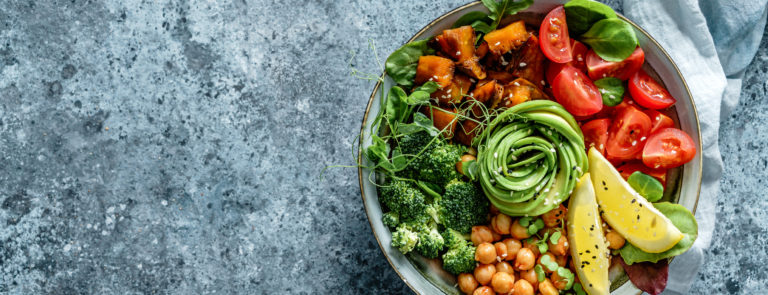15% off £35 OR 20% off £45
Code:FAVES
5 reasons to swap soy sauce for tamari

This Japanese sauce shares similarities with Chinese soy, but it’s not quite the same. We explore tamari sauce and how it can be used in your cooking.
Summary
1What is tamari?
Tamari is a sauce made from fermented soya beans. It’s a by-product of the process by which miso paste is made...
2What does tamari taste like?
Tamari is similar to soy sauce in that it has a rich, full-bodied flavour with a salty tang. It’s been described as less sharp and salty than soy...
35 reasons to swap soy sauce for tamari
Here are our top reasons to switch soy sauce for tamari next time you’re in the kitchen:...
Tamari is an increasingly popular ingredient in the UK, but perhaps you’re not sure exactly what it is. In this article, we will discover what tamari is, what tamari tastes like and how you can use it in your cooking. We’ll also explore whether tamari is healthy or not, and things to consider when adding it to your diet. Read on to answer your questions and learn all about tamari.
What is tamari?
Tamari is a sauce made from fermented soya beans. It’s a by-product of the process by which miso paste is made – and the result is a briny, rich liquid which has a strong ‘umami’ flavour.1 It’s dark in colour and the consistency is liquid – although somewhat less runny than soy sauce. Tamari has been around for centuries and is used widely in Japanese cooking.2
What does tamari taste like?
Tamari is similar to soy sauce in that it has a rich, full-bodied flavour with a salty tang. It’s been described as less sharp and salty than soy sauce.
Can you substitute soy sauce for tamari?
The answer is – yes! You can substitute soy sauce for tamari. Remember, soy sauce is actually the generic name given to any sauce made from soya beans. As tamari is made from fermented soya beans, technically tamari is a soy sauce. However, in the UK, the soy sauce most of us know is the Chinese variety - a dark, runny liquid with a salty, strong flavour. Due to their similar consistency and flavour profile, tamari can be used in place of soy sauce in countless recipes. As tamari doesn’t contain any wheat, many people use tamari in place of soy sauce when creating gluten-free dishes.
Summary
- Tamari is made from fermented soya beans
- Tamari is normally gluten-free
- Tamari can be used instead of soy sauce in cooking
5 reasons to swap soy sauce for tamari
Here are our top reasons to switch soy sauce for tamari next time you’re in the kitchen:
A key difference between tamari and regular soy sauce is that regular soy sauce contains wheat, whereas tamari doesn’t. This means regular soy sauce is not gluten-free, whereas tamari generally is gluten-free. It’s important to note that if you’re coeliac or intolerant to gluten, it’s important to always check that the products you’re eating are verified gluten-free.
Tamari contains more protein than soy sauce with 2g protein per tablespoon compared to soy sauce which has 1.3g protein per tablespoon.3,4 Since you’ll probably only be consuming up to a tablespoon at a time, this shouldn’t make much difference overall, but it’s worth knowing if you’re closely monitoring your macronutrient intake.
Tamari’s flavour could be described as less briny and salty than regular soy sauce. This makes it great for use as part of a dipping sauce or glaze which doesn’t overwhelm the rest of the dish with saltiness.
Tamari isn’t as runny as soy sauce and is thicker even than dark soy sauce. It’s more akin to hoisin sauce in texture, which means dressings and marinades made with tamari cling more evenly to ingredients without sliding off and pooling at the bottom of the bowl.
Tamari is beloved by clean eaters and health enthusiasts as it tends to be free from the additives – such as mono sodium glutamate (MSG)5 – which are usually added to other sauces, including soy sauce. Along with fermented soybeans, tamari ingredients tend to just be fermented soybeans, salt, water and a preservative.
Summary
- Tamari is gluten-free
- It has a higher protein content than soy sauce
- It had a milder flavour than soy sauce
- It is thicker It does not contain MSG
4 ways to use tamari
Used in Japanese cooking for centuries, tamari is a versatile ingredient to have on hand in the kitchen. Here are some ideas:
- Dipping sauce – you could use neat tamari as a dipping sauce, but you might find it too strong. We suggest mixing tamari with rice vinegar, soybean, vegetable or sesame oil and lime juice to create a yummy sauce perfect for dipping those dumplings.
- Condiment – just as you would with soy sauce, shake a little tamari over noodles, rice or any cooked dish to instantly boost flavour and add an umami kick.
- Marinade – as it’s slightly thicker than soy sauce, tamari is perfect to include in a marinade for meat, fish or tofu. Combining tamari with crushed ginger, garlic, honey, soybean, vegetable or sesame oil – even tahini – will give you a pungent rub for your protein of choice. After applying your bespoke marinade, place your dish in the fridge to absorb the flavours for a few hours before cooking.
- Stir fry – create your own teriyaki-style tamari sauce for a stir fry by combining tamari with vegetable stock, your oil of choice, sliced spring onion, crushed garlic, ginger and a little sugar or honey for sweetness. Add to your stir fry towards the end of cooking and give the pan or wok a good shake to ensure even distribution of the sauce.
- Summary
Tamari is a versatile ingredient and can be used as a condiment, a marinade, a dipping sauce and in stir fry recipes.
Health benefits of tamari – is it good for you?
Is tamari healthier than soy sauce?
Tamari and soy sauce are both derived from fermented soya beans and are similar in terms of nutrition. There are slight differences, however. At just 15 calories and 0g fat per tablespoon, tamari can be enjoyed as part of a weight loss diet.6 It’s gluten-free, so suitable for coeliacs and those with a gluten intolerance.
It also contains a little protein – 2g per tablespoon. Be warned – tamari is high in salt. Although it’s lower in sodium than soy sauce, tamari still packs a salty punch with up to 830mg sodium per tablespoon – that’s 42% of the recommended daily amount.7 Luckily, a little goes a long way. A tablespoon or two should be enough for most family-sized dishes. 1 tablespoon of tamari also contains small amounts of the B vitamin folate (3.2mcg) as well as choline (6.9mg).8
Summary
- Tamari can be enjoyed as part of a healthy, gluten-free diet
- Don’t go overboard on your serving sizes of tamari due to its high sodium content
- Tamari is slightly healthier than soy sauce
Related Articles
Shop by wellness goal
Sign up for exclusive offers
Plus, get expert advice to support your health & wellness straight to your inbox when you sign up to Holland & Barrett emails.
Read our
privacy policy













